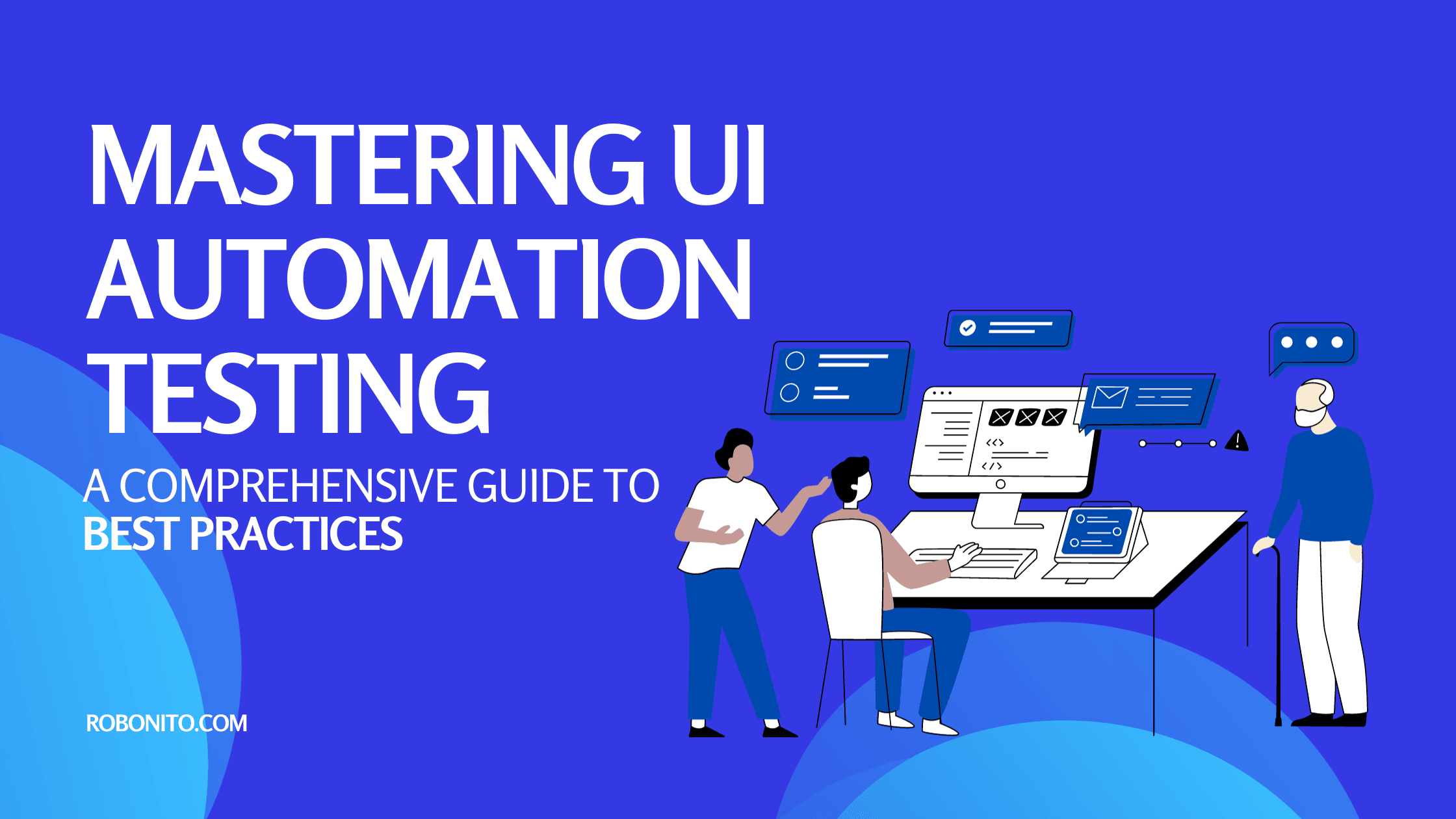UI automation testing has become not just a necessity but a linchpin in ensuring the quality and reliability of applications. As complexities in software projects soar, the need for a strategic approach to UI testing becomes paramount. This comprehensive guide aims to delve into the growing significance of UI automation testing, exploring the challenges it addresses, and providing in-depth insights into the best practices that can elevate your testing game.
Diversifying Testing Approach
UI Testing as the Third Defensive Shield:
In this section, we'll unravel the role of UI testing as the third defensive shield in your testing arsenal. Real-world examples will be dissected to illustrate how UI tests act as a vital layer, catching elusive issues that might slip through the cracks in unit and integration testing.
Implementing Behavior-Driven Development (BDD) Framework
Understanding BDD in UI Testing:
Behavior-Driven Development (BDD) takes center stage as we explore its profound impact on collaborative team understanding. We'll define BDD and delve into the collaborative nature of BDD scenarios, highlighting their pivotal role in developing precise specifications for UI testing.
Following Design Patterns and Principles
Building Robust Test Architectures:
Dive deep into the world of design patterns and their application in crafting robust UI automation frameworks. This section will meticulously detail essential design principles, providing a roadmap for creating maintainable and scalable UI test suites.
Minimizing Thread.sleep() Usage
Smart Wait Strategies:
The notorious Thread.sleep() is scrutinized, uncovering its drawbacks and the impact it can have on test execution speed. Intelligent wait strategies, including implicit and explicit waits tailored to specific UI elements, will be introduced to optimize your testing workflow.
Selective Browser Testing
Strategic Browser Compatibility:
Strategic browser testing becomes the focal point, emphasizing its importance for diverse platforms. We'll discuss tools and techniques for efficient cross-browser testing, ensuring a seamless user experience across various web environments.
Separating Tests from Framework
Organizational Best Practices:
Unlock the benefits of organizing tests separately from the automation framework. This section will delve into modular test design, shedding light on how it enhances maintainability and reusability, fostering an efficient testing ecosystem.
Ensuring Portability
Collaborative Development Environments:
Discover the advantages of storing automation files within version control systems. Additionally, we'll explore cloud-based storage solutions like Amazon S3, showcasing their relevance for large-scale test projects and collaborative development environments.
Using Clear Test Names
Semantic Test Naming:
The importance of semantic and descriptive test names is underscored in this section. We'll discuss naming conventions and their integral role in enhancing test readability and promoting effective collaboration within your testing team.
Utilizing Assertions Effectively
Focused Validation:
Assertions take the spotlight as we explore their role in validating specific UI elements and behaviors. Best practices for targeted assertions will be discussed, ensuring precise validation without unnecessary complexity in your test scripts.
Capturing Screenshots for Debugging
Diagnostic Test Artifacts:
Detailed insights into implementing screenshot capture mechanisms upon test failure will be provided. We'll discuss the seamless integration of screenshots into test reports, facilitating efficient debugging and issue resolution in your testing process.
Keeping Tests Simple and Readable
Simplicity in Complexity:
This section emphasizes the paramount importance of simplicity and readability in test script design. Techniques for avoiding over-engineering and maintaining straightforward test logic will be explored, ensuring your tests remain comprehensible and maintainable.
Following the "Green Tests Run" Policy
Proactive Issue Management:
Unpack the concept of prioritizing known issues within the test suite. Strategies for addressing and documenting known issues will be discussed, fostering a proactive approach to issue management and maintaining test reliability.
Employing Data-Driven Testing
Versatile Test Scenarios:
Delve into the benefits of data-driven testing in handling diverse test scenarios. Real-world examples will be provided, showcasing the impact of data-driven tests on test coverage and flexibility in your testing strategy.
Ensuring Test Independence
Parallel Testing and Maintenance Efficiency:
Explore the challenges associated with dependent tests and their impact on parallel execution. Strategies for ensuring test independence will be discussed, minimizing inter-test dependencies and optimizing maintenance efficiency.
Setting Up Detailed Test Reporting
Comprehensive Test Insights:
This concluding section will highlight the significance of detailed test reporting in QA workflows. Essential reporting features, including detailed test summaries, visual logs, and integration with CI/CD pipelines, will be explored, providing a comprehensive view of your testing landscape.
Conclusion:
Summarize the key takeaways from each best practice discussed in this exhaustive guide. Reinforce the transformative impact of implementing these practices on UI automation testing processes. Encourage readers to not merely adopt but embrace these strategies, empowering them to create not just efficient but exceptional, reliable, and maintainable UI automation testing frameworks in their respective projects.
FAQs:
-
Q: Are these best practices applicable to all programming languages? A: Absolutely! The principles discussed transcend language barriers and can be seamlessly applied across various programming languages.
-
Q: How can I convince my team to adopt these practices? A: Showcase the improved efficiency, reliability, and maintainability these practices bring, backed by real-world examples. Highlight the collaborative nature of these practices in fostering team cohesion.
-
Q: Is UI automation testing suitable for all types of applications? A: Yes, UI automation testing can be tailored for a wide array of applications, ranging from web and desktop to mobile applications.
-
Q: What role does continuous integration play in UI automation testing? A: Continuous Integration (CI) ensures that tests are run automatically, providing quick feedback on the application's health with each code change. It enhances efficiency and accelerates the development lifecycle.
-
Q: Can these practices be implemented in an agile development environment? A: Absolutely! These practices align seamlessly with agile methodologies, fostering flexibility and adaptability. They are designed to complement the iterative and collaborative nature of agile development.
